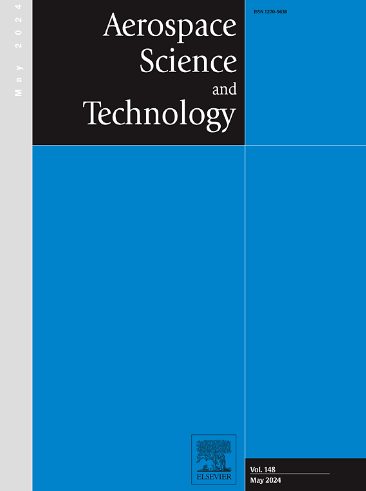利用可解释深度神经网络融合多源数据检测复合材料增材制造中的缺陷
IF 5
1区 工程技术
Q1 ENGINEERING, AEROSPACE
引用次数: 0
摘要
在航空航天应用领域,复合材料快速成型技术有可能取代传统的复合材料制造技术。快速成型制造能更好地适应复杂的设计,减少材料浪费,简化生产流程。然而,与传统的复合材料制造方法相比,快速成型制造在本质上更容易出现加工异常和缺陷,这主要是由于工艺的新颖性和没有施加压力。要有效利用增材制造的优势,质量和可靠性保证系统至关重要。在这项研究中,我们利用多摄像头系统(包括热像仪和电荷耦合器件摄像头)生成了多源数据,用于分析内层热成像和表面质量。这种多源数据被用于可解释零偏差深度神经网络框架,以检测制造缺陷。这种深度学习算法在常规密集层之后引入了一个新的零偏差层。在对每个数据流的正常(无缺陷)样本进行训练后,通过从零偏差层提取低维特征,将训练好的模型转化为异常检测器。这样,无需在任何有缺陷的输入上训练模型,就能识别各种异常。因此,与基于单一数据源的模型相比,多源数据模型检测多种类型异常的准确率更高。使用多源数据时,异常检测准确率为 99.72%;仅使用 CCD 图像时,准确率为 98.28%;仅使用热像仪数据时,准确率为 95%。本文章由计算机程序翻译,如有差异,请以英文原文为准。
Multisource data fusion for defect detection in composite additive manufacturing using explainable deep neural network
Composite additive manufacturing has the potential to replace traditional composite manufacturing for aerospace applications. Additive manufacturing provides greater adaptability to complex designs, reduce material waste, and streamline the production process. However, in comparison to conventional composite manufacturing methods, additive manufacturing is inherently more susceptible to processing anomalies and defects, primarily due to the novelty of the process and the absence of applied pressure. To effectively capitalize on the benefits of additive manufacturing, a quality and reliability assurance system is critical. In this study, we have generated multisource data to analyze the inner layer thermography and surface quality, employing a multi-camera system including thermal and charge-coupled device cameras. This multisource data is utilized in an explainable zero bias deep neural network framework to detect manufacturing defects. This deep learning algorithm introduces a new zero bias layer following the regular dense layer. After being trained on normal (defect-free) samples of each data stream, the trained model is transformed into an anomaly detector by extracting low dimension features from the zero-bias layer. This allowed identification various anomalies without having to train the model on any defective inputs. As a result, the model's accuracy to detect multiple types of anomalies is higher with multisource data compared to models based on single data source. Anomaly detection accuracy was 99.72% when using data from multiple sources, 98.28% when using only CCD images, and 95% when using only thermal camera data.
求助全文
通过发布文献求助,成功后即可免费获取论文全文。
去求助
来源期刊

Aerospace Science and Technology
工程技术-工程:宇航
CiteScore
10.30
自引率
28.60%
发文量
654
审稿时长
54 days
期刊介绍:
Aerospace Science and Technology publishes articles of outstanding scientific quality. Each article is reviewed by two referees. The journal welcomes papers from a wide range of countries. This journal publishes original papers, review articles and short communications related to all fields of aerospace research, fundamental and applied, potential applications of which are clearly related to:
• The design and the manufacture of aircraft, helicopters, missiles, launchers and satellites
• The control of their environment
• The study of various systems they are involved in, as supports or as targets.
Authors are invited to submit papers on new advances in the following topics to aerospace applications:
• Fluid dynamics
• Energetics and propulsion
• Materials and structures
• Flight mechanics
• Navigation, guidance and control
• Acoustics
• Optics
• Electromagnetism and radar
• Signal and image processing
• Information processing
• Data fusion
• Decision aid
• Human behaviour
• Robotics and intelligent systems
• Complex system engineering.
Etc.
 求助内容:
求助内容: 应助结果提醒方式:
应助结果提醒方式:


